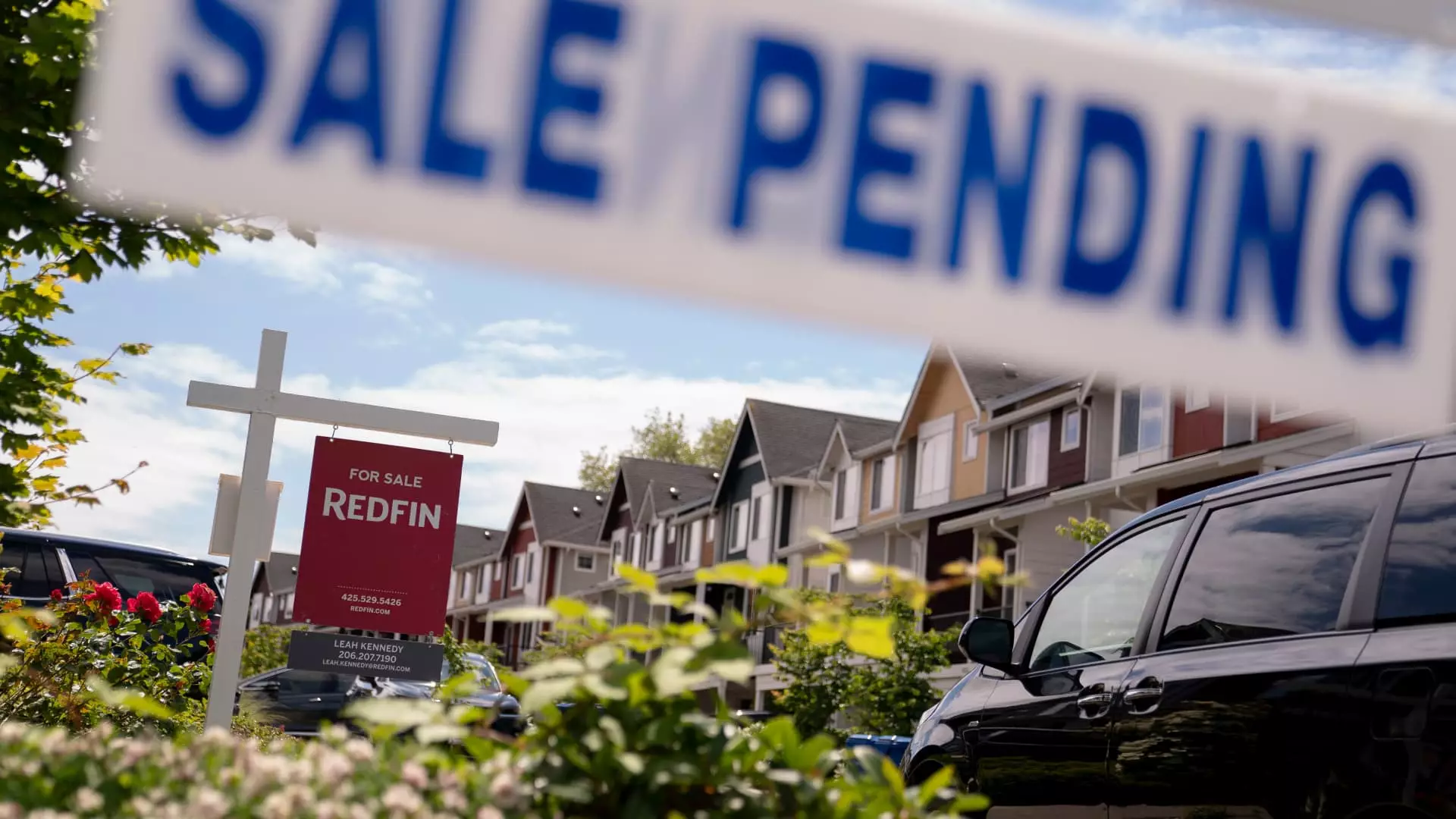The reverberations of rising mortgage rates have sent shockwaves through the housing market, a reality that homebuyers are feeling acutely this week. With mortgage rates hitting their highest point since February, there’s a palpable hesitation among potential buyers, evidenced by an 8.5% plunge in total mortgage application volume as reported by the Mortgage Bankers Association. This decline in demand isn’t merely a blip on the radar; it reflects a growing distrust of the economic landscape and a profound shift in consumer confidence.
For those navigating the waters of home-buying, the average interest rate on a 30-year fixed-rate mortgage has surged to a daunting 6.81%, a sharp increase from 6.61%. This climb does not only strain budgets but also forces many buyers to consider riskier alternatives, like adjustable-rate mortgages (ARMs). As borrowing costs escalate, the allure of a lower initial rate—despite the inherent financial peril—becomes tempting, particularly when conventional financing feels increasingly out of reach.
The Inventory Imbalance
What’s especially striking, though, is the divergence between demand and housing inventory. Despite a robust 13% increase in applications from a year ago, homebuyers face a staggering 30% rise in active inventory compared to the same period last year, according to Realtor.com. The surge in available homes should ideally bolster sales, yet an increase in stock has not translated into the expected leap in transactions. Why? Economic uncertainty looms large and injecting fear into the decision-making process for many would-be buyers.
With home prices climbing higher, it seems that the longer buyers wait, the more unaffordable their options become. This perilous conundrum forces prospective homeowners into a corner, leading them to choose less desirable financing options as they try to sidestep escalating costs.
Riskier Loans and Long-Term Implications
The migration towards ARMs might provide temporary relief with their lower initial rates, yet they come at a considerable price. After a full percentage point jump in ARM applications, it’s alarming to see that nearly a quarter of last week’s mortgage applications were for these riskier loans. Borrowers seeking larger amounts, which is commonplace in high-cost areas, are naturally gravitating towards ARMs as fixed rates soar. But this rush to latch onto lower initial rates could spell disaster when these loans recalibrate, potentially leading to payment shock and unaffordable monthly payments down the line.
It is a precarious balancing act that many are willing to undertake in an unpredictable environment. The compounding effects of rising rates, inflated home prices, and an unstable economy mean that the housing market is driven by urgency and desperation rather than rational decision-making. In a world where financial literacy is paramount, it’s concerning to see potential homeowners sacrificing long-term stability for short-term gains.
Economic Volatility: A Bitter Reality Check
As the week begins with a slight easing in mortgage rates, caution is the watchword. Experts cry out that while conditions may appear stable now, the unpredictable nature of economic fluctuations means this reprieve could be short-lived. Matthew Graham, chief operating officer at Mortgage News Daily, emphasizes that we shouldn’t take today’s rates as a benchmark. The potential for volatility remains, presenting a daunting cycle of uncertainty for those in the market.
The echoing sentiment is clear: it has become increasingly vital for potential buyers to weigh their options carefully and understand both the immediate and long-reaching consequences of their decisions. Amidst a landscape filled with economic challenges, it’s essential to step back and evaluate whether the financial risks of pursuing a home in this climate truly align with one’s long-term goals.
Is a home truly a secure asset when the very foundations of the financial system appear so shaky? In an era where homeownership is intertwined with broader economic implications, we must advocate for informed consumerism while navigating a treacherous and turbulent market.

